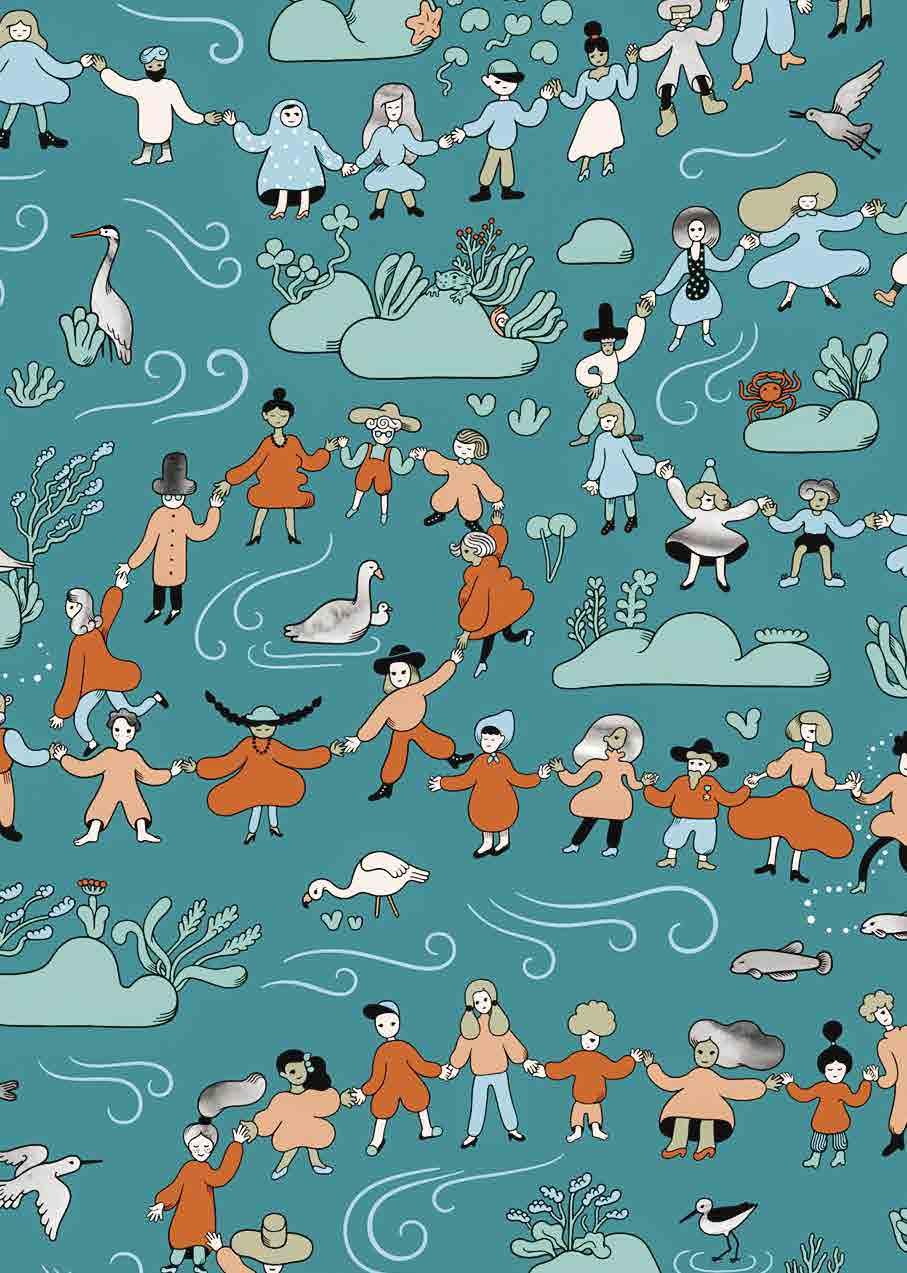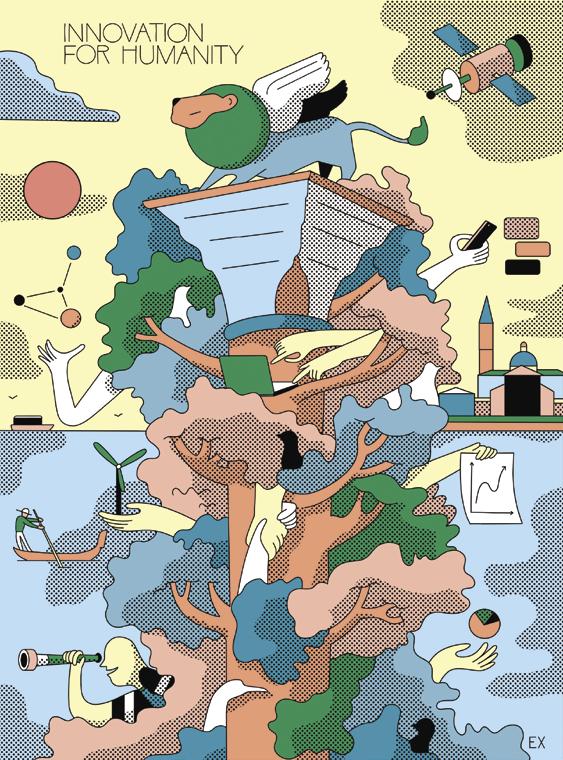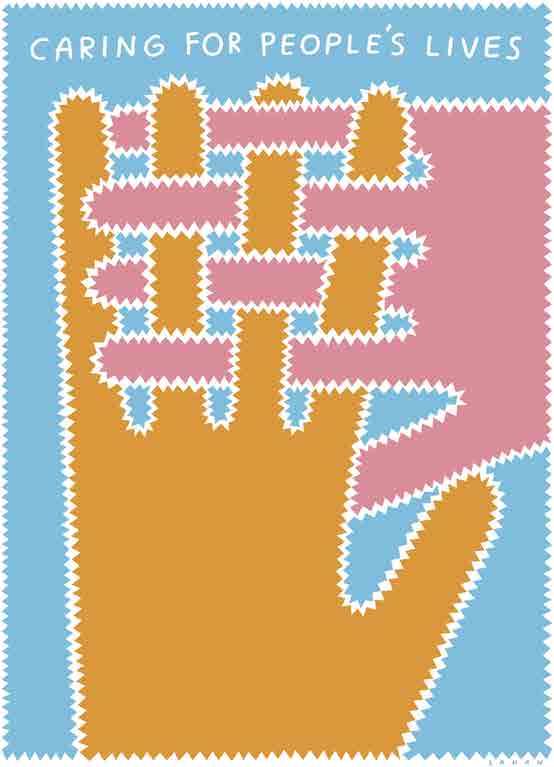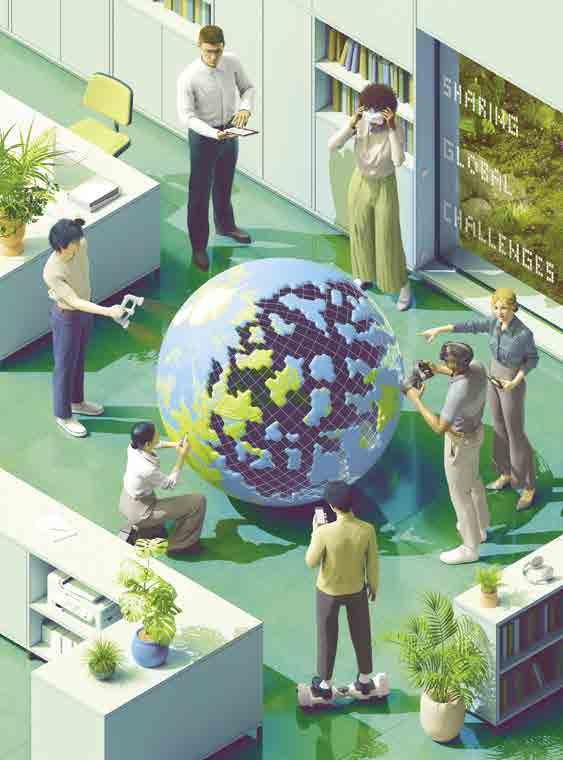
5 minute read
Six Signature Posters
Six Signature Posters
A powerful source of inspiration, these signature posters tell the tale of trends and tastes in society, its desires and aspirations, going all the way back to the late-19th and early20th centuries.
Advertisement
THE EDITORIAL OFFICE
Some of the great artists have left their unmistakeable mark on the collective imagination through this artform. In the course of its history, Generali has collaborated with some of the most renowned illustrators – including Marcello Dudovich, Gino Boccasile, Achille Beltrame and Gian Luciano Sormani – as they interpreted reality and changes, innovated using figurative representations and gifted us with images that have taken their place in history. This is a tradition that Generali is celebrating and revisiting in the This is Tomorrow project, marking its 190th anniversary, thanks to the creativity of six international artists who deal with six key themes for the Group, all linked to our guiding value, sustainability. This highly evocative exploration of the contemporary world confirms the Group’s commitment to disseminating its core values and interpreting reality in an up-to-date manner. This initiative would not have been possible without the valuable and essential commitment of Professor Luca Massimo Barbero – art historian, internationally renowned curator and director of the Institute of Art History at the Cini Foundation. With his cooperation, it was possible to work in symbiosis with top international artists who seamlessly took on the mantle of the great illustrators of the past.

GERAR DUBOIS
BY LUCA MASSIMO BARBERO – ART CRITIC
The celebration of an important anniversary is an occasion for us to feel deeply our roots and the foundations of our values and, at the same time, to look forward, into the future. The 190 years since the foundation of Generali have been rich in visual imagery dating back to the company’s origins extending over almost two centuries of social engagement and communication. The images form an uninterrupted flow and reflect a continual relationship with society based on public intervention and communication with the individual and the community in a free, sensitive and open manner.
Since the time of Generali’s birth, in the 19th century, its images and its means of communication have grown exponentially and in new ways, taking on the most diverse forms and technically innovative styles, varying, modifying, and developing. Even today, against the background of a technological and extraordinary virtual world that is so fascinating and immediate in its distribution of images and their fruition by society, the ones created by artists, on the classical supports of the print medium, acquire a modernity in the light of their renewed tradition. The image created for printing and conceived with the tactile physicality of paper and the graphic medium in mind, takes on in today’s world an ever more contemporary sense, a topicality that is a confirmation of the evolutionary force of tradition. The future that stems from the present, developing out of its own roots.

ELENA XAUSA
The male and female artists who have been involved in the project have been given the opportunity to explore and plumb the vast range of interests and commitments that Generali has at an international level. Each of them has drawn inspiration from that universe, creating a series of studies and pursuing lines of research that have culminated in these extraordinary and incisive illustrations, illuminated by a sense of history and by the contemporary energy of the visual arts. In the fantastic interplay between generations of his For the Future Together, George Dubois declares this with a familiar sense of wonder. While Elena Xausa in her work Innovation for Humanity joyfully constructs one of the columns in Venice’s St. Mark’s Square, the place from which Generali has emanated for decades its interest in society and its development, with its gaze turned on tomorrow.

TIM LAHAN
That intense and technical gaze focused on humanity which is symbolized by the bust constructed out of symbols of engagement and technology created by the Craig&Karl duo. Their Solutions for a Better World is a vision, an expression of belief in the immensity of the world and in our responsibility to make sure that it is always improving. And unity, commitment to humanity and “holding with strength and tenderness” are what Tim Lahan sets out to symbolize with the clasped hands of his Caring for People’s Lives, fragile, intense, ready to construct a possible and safer future. People, as individuals and as a community, in order to create points of encounter, collaboration, discovery and union. Alena Skarina’s draws dreamy lagoons in which humanity unites the islands, forging a link between environment and human being as is suggested by the title The Human Safety Net.

CRAIG & KARL
And at Generali, a human being at work can be recognized in each of the people who participate daily in the company’s challenges and social enterprises. Drawing on the power of those visions and desires, they are all engaged every day in the effort to give them concrete expression, to make them possible and responsible, as Max Guther recounts with his illustration symbolically uniting the world of work with the responsibility and awareness that every action and idea shares and fosters with a view to Sharing Global Challenges for the creation of a better world.

MAX GUTHER

Luca Massimo Barbero is an art historian and critic, associate curator of Intesa Sanpaolo’s modern and contemporary art collections and formerly associate curator of the Peggy Guggenheim Collection in Venice. He is also a member of the scientific committee of the Farnesina Collection and the director of the Giorgio Cini Foundation’s Institute of Art History. As a consultant for various modern and contemporary art institutions, he has worked with Italian and international institutions including the Venice Biennale, the Moderna Museet museum in Stockholm and the Kunsthaus in Zurich. He has written extensively, and curated numerous exhibitions dedicated to American and Italian art from the post-war period to the present day.










